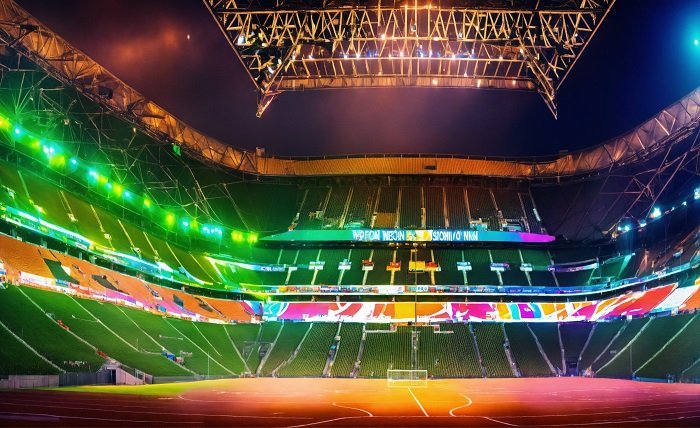He watches a kid dribble on cracked asphalt, shoes squeaking against chalked sidelines instead of polished hardwood. Talent rarely announces itself with fireworks; it grows in pockets — schoolyards, parking lots, dimly lit gyms. The path from there to professional arenas is not a single leap but a string of tiny waypoints. Much like a player learning probability rhythms inside lucky 7 game online play, young athletes test moves, read patterns and adjust on the fly, long before scouts ever notice their names.
Micro‑Trajectories: The Small Steps That Stack
A future pro’s journey is built from dozens of micro‑decisions: staying after practice for ten extra shots, joining a weekend tournament two towns over, saying yes to a coach who actually critiques instead of flatters. Local leagues formalize those chances. They give structure to raw impulse, match emerging skill with tougher opposition, and teach rules beyond the rulebook — punctuality, teamwork, resilience after a bad call. Without those stops, many gifted players stall out not for lack of talent but for lack of a ladder.
- Early competition in neighborhood leagues exposes youngsters to varied play styles, forcing adaptation instead of complacency.
- Volunteer coaches, often ex‑players, pass along unrecorded craft — footwork tricks, mental resets, recovery habits.
- Community tournaments create mini‑spotlights, letting shy talents feel pressure in digestible doses.
- Local media blurbs and social posts offer first tastes of public scrutiny, preparing kids for louder stages later.
- Small sponsorships — discounted gear, travel stipends — keep passion alive when family budgets strain.
The Social Fabric Around a Prospect
Behind every rising athlete stands a web of mentors, teammates, parents and rivals. Local leagues tie that web tighter. Practices turn into carpools, rivalries into friendships, coaches into surrogate uncles. The social safety net matters: when a teenager hits a slump, the league’s community can nudge him back, remind her why she started, or just give a ride to practice. This village effect keeps trajectories from snapping when life throws a curve.
Data Meets Dirt Fields
Modern talent scouting is not only clip reels and combine metrics; it is also spreadsheets, GPS logs and growth charts. Yet data collection often begins informally in local leagues: a coach noting sprint times in a notebook, a parent filming games on a phone, a volunteer analyst tracking touches per possession. Over time, those numbers help identify trends — a midfielder who always wins second balls, a sprinter whose split times keep dropping — that fuel the first serious call from a regional academy.
- Wearables trickle down: heart‑rate straps and basic GPS vests show up in better‑funded youth clubs.
- Open‑source analytics tools let math‑savvy volunteers chart shot maps and passing networks.
- Shared databases across community programs prevent talents from disappearing when families move.
- Simple wellness logs (sleep, soreness, mood) teach athletes to monitor themselves early.
- Video review sessions — even on borrowed projectors — cultivate tactical vocabulary before the pro environment.
When Local Leagues Fail — and How to Fix Them
Access is the first fracture line. Some neighborhoods lack fields or safe gyms; others price kids out with fees and travel costs. Gender bias, language barriers and disability access can quietly gatekeep entire groups. Solutions exist, but they demand intention: sliding scale dues, equipment libraries, inclusive coaching education, partnerships with schools for shared facilities. Without that groundwork, micro‑trajectories narrow to those already advantaged.
The Psychological Shift: From Big Dreams to Daily Work
A child’s vision of “making it” is a trophy photo; the adult version is a spreadsheet of habits. Local leagues shepherd that shift. They normalize the grind: Wednesday drills, Saturday doubleheaders, the bus ride home after a loss. Athletes learn that growth hides in boring reps, not just highlight moments. If that lesson lands early, the jump to academy regimens or college programs feels less like a shock and more like an upgrade.
Clubs and Pros Looking Backward
Smart professional organizations now invest downward. They sponsor grassroots leagues, send development coaches to run clinics, and build scouting relationships with community coordinators who actually know which kid plays through pain or leads quietly. This reverse pipeline benefits both sides: clubs widen their talent pool, communities gain resources, and young players see a tangible bridge instead of an abstract dream.
Culture, Identity and Staying Power
Local leagues do more than polish skills; they anchor identity. Playing for a neighborhood name or a school crest imprints loyalty and pride. That cultural glue matters when higher levels tempt athletes to cut corners or chase quick glory. Those who remember where they started often come back in off‑seasons, running clinics or sponsoring teams. The loop closes, and the next generation meets a living example that stadium lights do not erase streetlights.
Conclusion: Big Arenas Need Small Courts
From the outside, a pro debut looks like a sudden arrival. From the inside, it is a thousand quiet steps that began on uneven ground. Micro‑trajectories carry talent forward because local leagues give each step a surface to land on. They supply competition, community, early data, and a language of discipline. Strip them away and the sport loses not only future champions but the culture that makes victory mean something. He sees it clearly: the path from courtyard to stadium is not magic — it is scaffolding, built close to home and climbed one rung at a time.
You May Also Like :
